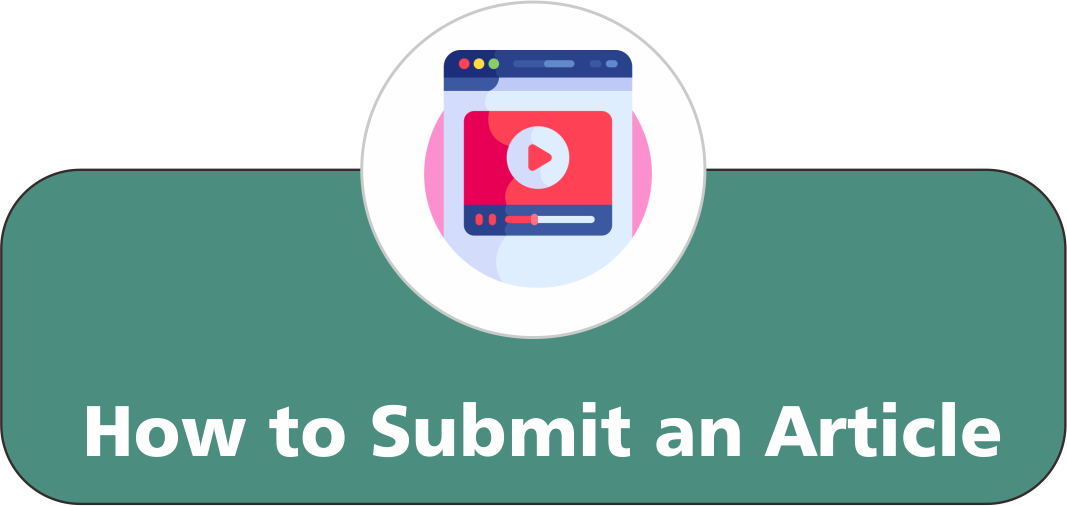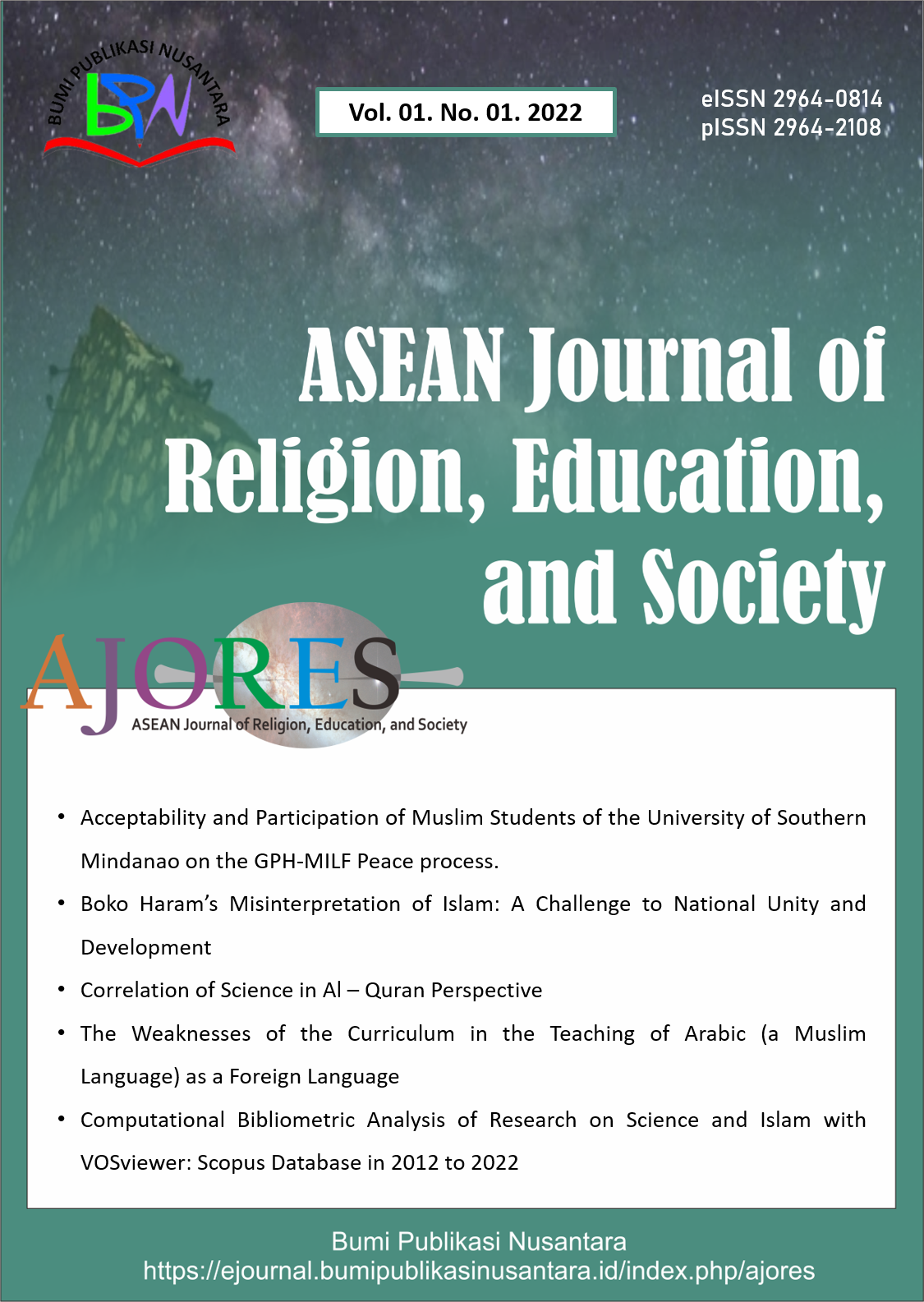Ecopsychology, Restorativeness, Spiritual Values and Emotional Disturbances among Undergraduates Students: A Systematic Literature Review
 ), Abu Yazid Abu Bakar(2),
), Abu Yazid Abu Bakar(2),
(1) International Islamic University of Malaysia
(2) Universiti Kebangsaan Malaysia
 Corresponding Author
Corresponding Author
Abstract
Keywords
References
Adevi, A. A., and Mårtensson, F. (2013). Stress rehabilitation through garden therapy: The garden as a place in the recovery from stress. Urban Forestry and Urban Greening, 12(2), 230-237.
Annerstedt, M., and Währborg, P. (2011). Nature-assisted therapy: Systematic review of controlled and observational studies. Scandinavian Journal of Social Medicine, 39(4), 371-388.
Barton, B. T., and Schmitz, O. J. (2009). Experimental warming transforms multiple predator effects in a grassland food web. Ecology Letters, 12(12), 1317-1325.
Barton, J., and Pretty, J. (2010). What is the best dose of nature and green exercise for improving mental health? A multi-study analysis. Environmental Science and Technology, 44(10), 3947-3955.
Barton, J., Griffin, M., and Pretty, J. (2012). Exercise, nature-and socially interactive-based initiatives improve mood and self-esteem in the clinical population. Perspectives in Public Health, 132(2), 89-96.
Benfield, J. A., Rainbolt, G. N., Bell, P. A., and Donovan, G. H. (2015). Classrooms with nature views: Evidence of differing student perceptions and behaviors. Environment and Behavior, 47(2), 140-157.
Berger, R., and Tiry, M. (2012). The enchanting forest and the healing sand—Nature therapy with people coping with psychiatric difficulties. The Arts in Psychotherapy, 39(5), 412-416.
Berman, M. G., Jonides, J., and Kaplan, S. (2008). The cognitive benefits of interacting with nature. Psychological Science, 19(12), 1207-1212.
Besthorn, F. H., Wulff, D., and St. George, S. (2010). Eco-spiritual helping and postmodern therapy: A deeper ecological framework. Ecopsychology, 2(1), 23-32.
Boomsma, C., and Steg, L. (2014). The effect of information and values on acceptability of reduced street lighting. Journal of Environmental Psychology, 39, 22-31.
Bratman, G. N., Hamilton, J. P., Hahn, K. S., Daily, G. C., and Gross, J. J. (2015). Nature experience reduces rumination and subgenual prefrontal cortex activation. Proc Natl Acad Sci USA, 112(28), 8567-8572.
Brussoni, M., Olsen, L. L., Pike, I., and Sleet, D. A. (2012). Risky play and children’s safety: Balancing priorities for optimal child development. International journal of environmental research and public health, 9(9), 3134-3148.
Chalquist, C. (2009). A look at the ecotherapy research evidence. Ecopsychology, 1(2), 64-74.
Cimprich, B., and Ronis, D. L. (2003). An environmental intervention to restore attention in women with newly diagnosed breast cancer. Cancer Nursing, 26(4), 284-292.
Cohen, S., Janicki-Deverts, D., and Miller, G. E. (2007). Psychological stress and disease. Jama, 298(14), 1685-1687.
Cracknell, D., White, M. P., Pahl, S., Nichols, W. J., and Depledge, M. H. (2016). Marine biota and psychological well-being: A preliminary examination of dose–response effects in an aquarium setting. Environment and Behavior, 48(10), 1242-1269.
de Montigny, L., Ling, R., and Zacharias, J. (2012). The effects of weather on walking rates in nine cities. Environment and Behavior, 44(6), 821-840.
Dopko, R. L. (2012). Effects of nature on cooperation in a commons dilemma: Implications for sustainability (Doctoral dissertation, Carleton University).
Downs. M., and Eisenbery, D. (2012), Help seeking and treatment use among suicidal college students. Journal of American College Health 60 (2), 104-113.
Fisher, A. (2013). Ecopsychology at the crossroads: Contesting the nature of a field. Ecopsychology, 5(3), 167-176.
Fisher, T. (2006). Educational transformation: Is it, like ‘beauty’, in the eye of the beholder, or will we know it when we see it?. Education and Information Technologies, 11(3-4), 293-303.
Franken, C., (1994). The role of positive emotions in positive psychology: The broadening and build theory of positive emotions. American Journal of Psychology, 56, 218-226.
Frumkin, H. (2001). Beyond toxicity: human health and the natural environment. American Journal of Preventive Medicine, 20(3), 234-240.
Frumkin, H., Bratman, G. N., Breslow, S. J., Cochran, B., Kahn, P. H., Lawler, J. J., Levin, P.S., Tandon, P.S., Varanasi, U., Wolf, K.L., and Wood, S. A. (2017). Nature contact and human health: A research agenda. Environmental Health Perspectives, 125(7), 075001.
Haddaway, N.R., Macura, B., Whaley, P., et al. (2018). RepOrting standards for Sys- tematic Evidence Syntheses: pro forma, flow-diagram and descriptive summary of the plan and conduct of environmental systematic reviews and systematic maps. Environ Evid, 7, 7.
Hartig, T., and Staats, H. (2006). The need for psychological restoration as a determinant of environmental preferences. Journal of Environmental Psychology, 26(3), 215-226.
Hartig, T., Evans, G. W., Jamner, L. D., Davis, D. S., and Gärling, T. (2003). Tracking restoration in natural and urban field settings. Journal of Environmental Psychology, 23(2), 109-123.
Hartig, T., Kaiser, F. G., and Bowler, P. A. (2001). Psychological restoration in nature as a positive motivation for ecological behavior. Environment and Behavior, 33(4), 590-607.
Hartig, T., Korpela, K., Evans, G. W., and Gärling, T. (1997). A measure of restorative quality in environments. Scandinavian Housing and Planning Research, 14(4), 175-194.
Hartig, T., Mang, M., and Evans, G. W. (1991). Restorative effects of natural environment experiences. Environment and Behavior, 23(1), 3-26.
Hasan, A. A. H. (2019). Prevalence of internet addiction, its association with psychological distress, coping strategies among undergraduate students. Nurse Education Today, 81, 78-82.
Hegarty, J. R. (2010). Out of the consulting room and into the woods? Experiences of nature-connectedness and self-healing. European Journal of Ecopsychology, 1, 64-84.
Herzog, T. R., Maguire, P., and Nebel, M. B. (2003). Assessing the restorative components of environments. Journal of Environmental Psychology, 23(2), 159-170.
Hibbeln, J. R., and Gow, R. V. (2014). The potential for military diets to reduce depression, suicide, and impulsive aggression: a review of current evidence for omega-3 and omega-6 fatty acids. Military Medicine, 179(suppl_11), 117-128.
Howell, A. J., Dopko, R. L., Passmore, H. A., and Buro, K. (2011). Nature connectedness: Associations with well-being and mindfulness. Personality and Individual Differences, 51(2), 166-171.
Huynh, Q., Craig, W., Janssen, I., and Pickett, W. (2013). Exposure to public natural space as a protective factor for emotional well-being among young people in Canada. BMC Public Health, 13(1), 407.
Jakubec, S. L., Den Hoed, D. C., Krishnamurthy, A., Ray, H., and Quinn, M. (2016). P015 Nature Teaches Us to Grieve: The Place of Parks and Nature at End of Life. Journal of Pain and Symptom Management, 52(6), 69.
Jiang B, Chang C-Y, Sullivan WC. (2014). A dose of nature: Tree cover, stress reduc- tion, and gender differences. Landsc Urban Plan, 132, 26-36.
Kamitsis, I., and Francis, A. J. (2013). Spirituality mediates the relationship between engagement with nature and psychological well-being. Journal of Environmental Psychology, 36, 136-143.
Kaplan, S. (1995). The restorative benefits of nature: Toward an integrative framework. Journal of Environmental Psychology, 15(3), 169-182.
Kawaguchi, Y., Toyomasu, K., Yoshida, N., Baba, K., Uemoto, M., and Minota, S. (2007). Measuring job stress among hospital nurses: an attempt to identify biological markers. Fukuoka Igaku Zasshi Hukuoka Acta Medica, 98(2), 48-55.
Khaw, K. T., Sharp, S. J., Finikarides, L., Afzal, I., Lentjes, M., Luben, R., and Forouhi, N. G. (2018). Randomised trial of coconut oil, olive oil or butter on blood lipids and other cardiovascular risk factors in healthy men and women. BMJ Open, 8(3), e020167.
Kuo, F. E., and Sullivan, W. C. (2001). Environment and crime in the inner city: Does vegetation reduce crime?. Environment and Behavior, 33(3), 343-367.
Laumann, K., Gärling, T., and Stormark, K. M. (2001). Rating scale measures of restorative components of environments. Journal of Environmental Psychology, 21(1), 31-44.
Law, D. W. (2007). Exhaustion in university students and the effect of coursework involvement. Journal of American College Health, 55(4), 239-245.
Lee, A.C., Jordan, H. C., and Horsley, J. (2015). Value of urban green spaces in promoting healthy living and well-being: prospects for planning. Risk Manag Healthc Policy, 8,131-137.
Macht, M., and Mueller, J. (2007). Immediate effects of chocolate on experimentally induced mood states. Appetite, 49(3), 667-674.
Mackay, G. J., and Neill, J. T. (2010). The effect of “green exercise” on state anxiety and the role of exercise duration, intensity, and greenness: A quasi-experimental study. Psychology of Sport and Exercise, 11(3), 238-245.
Article Metrics
Abstract View : 994 times
: 994 times Download : 668 times
Download : 668 times
Refbacks
- There are currently no refbacks.
Copyright (c) 2023 Bumi Publikasi Nusantara

This work is licensed under a Creative Commons Attribution-ShareAlike 4.0 International License.







